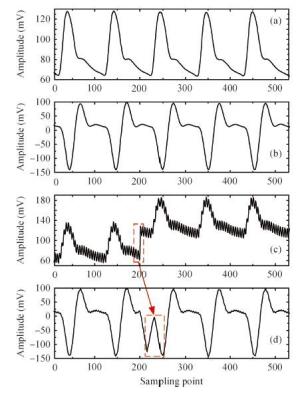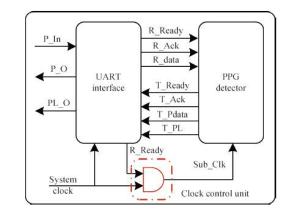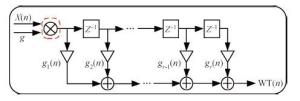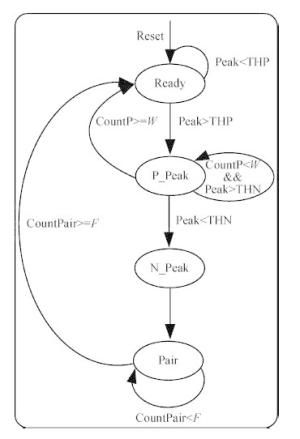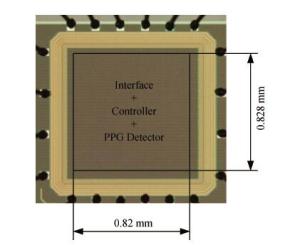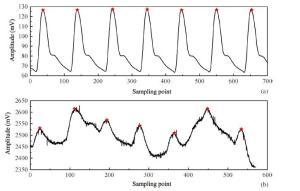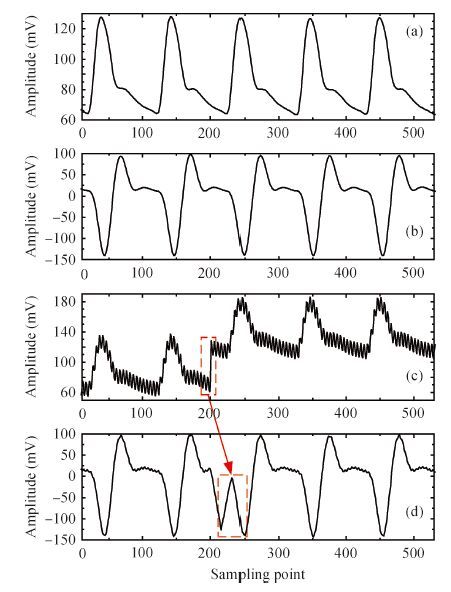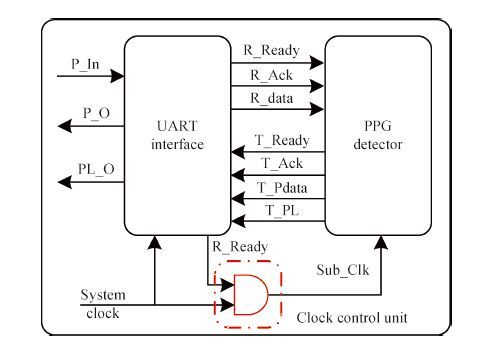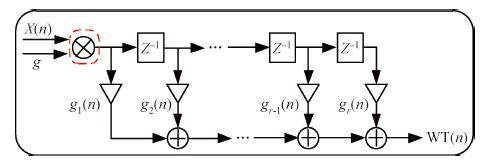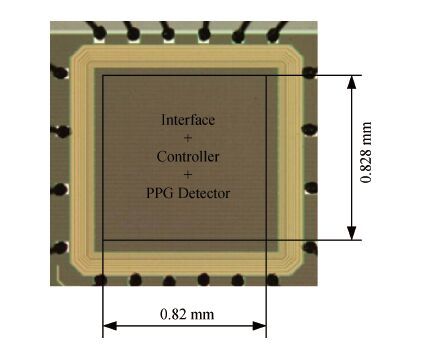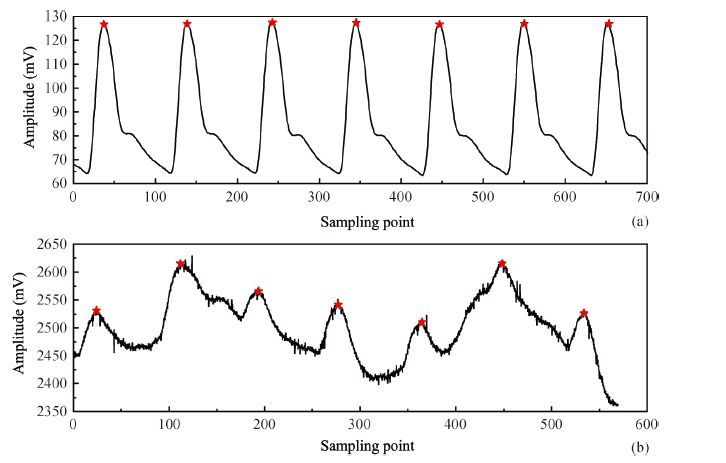| Citation: |
Xiang Li, Xu Zhang, Peng Li, Xiaohui Hu, Hongda Chen. An 8.12 μ W wavelet denoising chip for PPG detection and portable heart ratemonitoring in 0.18 μm CMOS[J]. Journal of Semiconductors, 2016, 37(5): 055006. doi: 10.1088/1674-4926/37/5/055006
X Li, X Zhang, P Li, X H Hu, H D Chen. An 8.12 μ W wavelet denoising chip for PPG detection and portable heart ratemonitoring in 0.18 μm CMOS[J]. J. Semicond., 2016, 37(5): 055006. doi: 10.1088/1674-4926/37/5/055006.
Export: BibTex EndNote
|
An 8.12 μ W wavelet denoising chip for PPG detection and portable heart ratemonitoring in 0.18 μm CMOS
doi: 10.1088/1674-4926/37/5/055006
More Information-
Abstract
A low power wavelet denoising chip for photoplethysmography (PPG) detection and portable heart rate monitoring is presented. To eliminate noise and improve detection accuracy, Harr wavelet (HWT) is chosen as the processing tool. An optimized finite impulse response structure is proposed to lower the computational complexity of proposed algorithm, which is benefit for reducing the power consumption of proposed chip. The modulus maxima pair location module is design to accurately locate the PPG peaks. A clock control unit is designed to further reduce the power consumption of the proposed chip. Fabricated with the 0.18 μm N-well CMOS 1P6M technology, the power consumption of proposed chip is only 8.12 μ W in 1 V voltage supply. Validated with PPG signals in multiparameter intelligent monitoring in intensive care databases and signals acquired by the wrist photoelectric volume detection front end, the proposed chip can accurately detect PPG signals. The average sensitivity and positive prediction are 99.91% and 100%, respectively. -
References
[1] [2] [3] [4] [5] [6] [7] [8] [9] [10] [11] [12] -
Proportional views





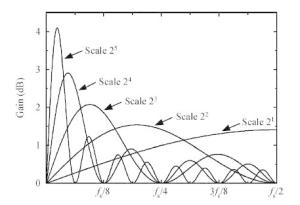
 DownLoad:
DownLoad:
